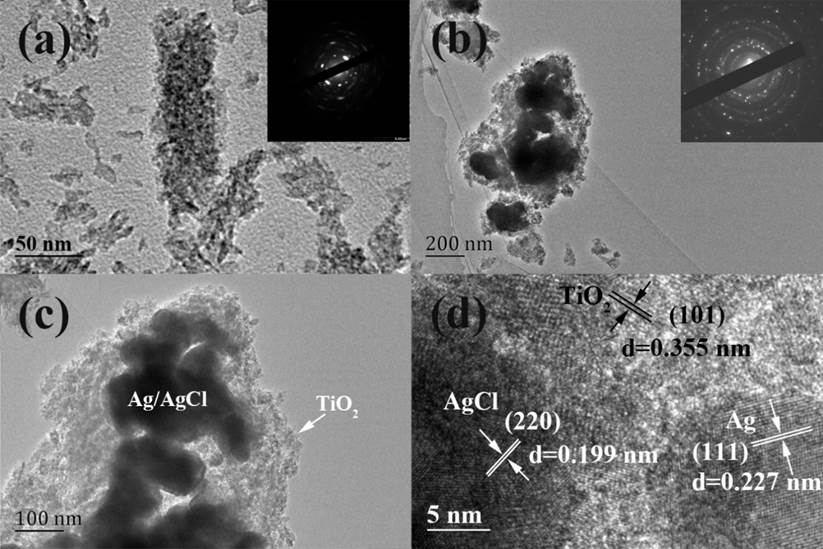Recently, Youth teacher Xin Yu published a new paper in Chemical Engineering Journal, the title is “Efficient visible light photocatalytic antibiotic elimination performance induced by nanostructured Ag/AgCl@Ti3+-TiO2mesocrystals”. In this paper, the author suggests that efficient visible light photocatalytic elimination of pharmaceutical factory wastewater is one of widely concerned and greatly significant attempts in dealing with increasingly serious environmental pollution problems. In this work, hybrid Ag/AgCl nanoparticles were successfully introduced into Ti3+self-doped TiO2mesocrystals via precipitation and photo-reduction methods for efficient visible light photocatalytic antibiotic elimination. Some characterization measurements, such as XRD, SEM, TEM, XPS, UV–vis DRS spectra, fluorescence emission spectra, time-resolved fluorescence spectra, FT-IR spectra, and electrochemical measurements, were applied to investigate the physico-chemical properties of nanostructured Ag/AgCl@Ti3+-TiO2mesocrystals. The experiment results showed that nanostructured Ag/AgCl@Ti3+-TiO2-60 composites presented the best visible light photocatalytic performance for tetracycline degradation, which was approximately 3.52 times of Ti3+-TiO2mesocrystals and 22.43 times of commercial TiO2. Trapping experiments of active species and DMPO spin-trapping ESR experiments further confirmed that the visible light photocatalytic tetracycline degradation by Ag/AgCl@Ti3+-TiO2mesocrystals were mainly due to the continuous attacks of photo-generated holes,-OH and O2−radicals on tetracycline molecules. Besides, nanostructured Ag/AgCl@Ti3TiO composites were also employed in visible light photocatalytic industrial para-ester wastewater degradation. Finally, possible tetracycline transformation pathways and visible light photocatalytic tetracycline degradation mechanism over plasmonic Ag/AgCl@Ti3+-TiO2composites were also proposed. Current work indicates that defective semiconductor mesocrystals and their composites have huge prospects in the refractory organic elimination.

This article was published online by Chemical Engineering Journal on July 22, 2020, (DOI:10.1016/j.cej.2020.126359). Xin Yu, Junwei Zhao and Xinqi Ma at College of Chemistry and Chemical Engineering, Henan University are the corresponding author of this article. The first author is Xin Yu.
This work was financially supported by the Scientific and Technological Project of Henan Province, the Program for Innovation Teams in Science and Technology in Universities of Henan Province, and the Project funded by China Postdoctoral Science Foundation.